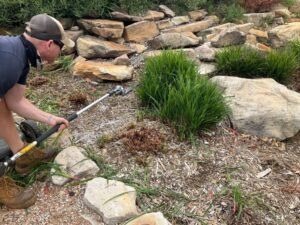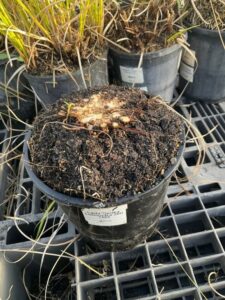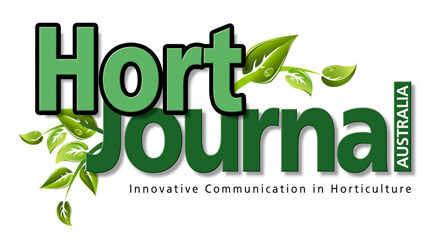Hackable groundcovers – the ultimate rejuvenators
By Daniel Fuller
At Ozbreed, we believe we’re only just now starting to bring out the best traits of our native Australian plants. Recently, we’ve had a renewed focus on providing the industry with plants that can be hacked back reliably for ease of maintenance. We call these plants the ‘hackables’, and they are able to bounce back better than ever after extreme pruning that would kill most plants.
Typically, you can safely prune a dianella or lomandra at a height of 10-15cm above the ground. Some can be cut as low as 5cm and bounce back vigorously. However, if you cut them too short, you will sever all of the growing tips, and the plant may not have enough energy to replace the lost foliage.

This is not the case with Dianella ‘DCNC3’ PBR Intended, Trade name Baby Breeze™, Lomandra fluviatilis ‘LM380’ PBR, Trade name Shara Blue™, Lomandra longifolia ‘LM300’, Trade name Tanika®, Lomandra fluviatilis ‘ABU7’ PBR, Trade name Shara™, Lomandra longifolia ‘LM600’ PBR, Trade name Evergreen Baby™, and Lomandra longifolia ‘LM360’ PBR, Trade name Lady Tanika®. We have repeatedly experimented with cutting them right to the ground, achieving 100% survival rates, which indicates their resilience in the face of even the least experienced maintenance crew. Operators don’t need to follow a strict cutting height; instead, a Parks and Gardens apprentice can be confidently let loose armed with a hedge trimmer, a rake, and a bag to collect the waste.
Additionally, the waste can be ‘chopped and dropped’ as mulch, keeping in mind that the usual rules for mulching apply, such as not burying stems. Not only does this save time and money on removing green waste, but it also saves money on the purchase of mulch and is a more sustainable way to store carbon within the landscape.
True grasses are another great chop-and-drop option because they are typically easy to cut with a brush cutter. Poa spp. ‘POL12’ PBR, Trade name Eskdale Blue™, and Cenchrus purpurascens ‘PA300’, Trade name Nafray®, are among the highest performers with hard cutbacks.

For designs that require a tidy trailing or shrubby groundcover, there are a few options that can be pruned hard by an inexperienced operator and which look better than ever a few weeks later. Hibbertia scandens ‘HBS01’ PBR Trade name, Groundswell™, Rhagodia spinescens ‘SAB01’ PBR, Trade name Aussie Flat Bush™, and Pandorea jasminoides ‘PJ01’ PBR, Trade name Ozbreed Flat White™ are the go-to hackable groundcovers for ease of pruning and reliable recovery.
Following our recent webinar through AILA on the topic of biodiversity for pest resilience, it became clear that landscape architects are interested in native plants that can be pruned heavily and have the waste dropped as mulch. They are actively seeking ways to enhance soil biomass and promote sustainability.
Mal-pruning is one of the most significant mistakes maintenance crews make, resulting in poor growth responses, diseases, and even plant death. Specifiers can reduce these risks by choosing plants that thrive after what would usually be considered mal-pruning. If they look scrappy after a few years of drought or they have been beaten by a child with a stick, you can cut them at the base and give them a new lease on life.
Usually, you would hack plants once every few years. The safest time to do so is generally late winter to early spring, just as plants are awakening for the growing season, but before the brutal summer sun. Some operators prefer to prune tufting grasses in autumn, as they dislike seeing the dry foliage during the colder months, while others appreciate the coppery to brown look.
Armed with this knowledge, nursery wholesalers and retailers can assist their clients in choosing low-maintenance, low-fuss plants that don’t necessarily require pruning but can be ‘chopped and dropped’ if desired, with a higher success rate than common forms. By saving clients’ money on the back end through maintenance, you can help them feel more confident about spending money on the front end of their projects by purchasing reliable plants.
Daniel Fuller, Ozbreed
M: 042 6169 708
E: horticulture@ozbreed.com.au
W: ozbreed.com.au
